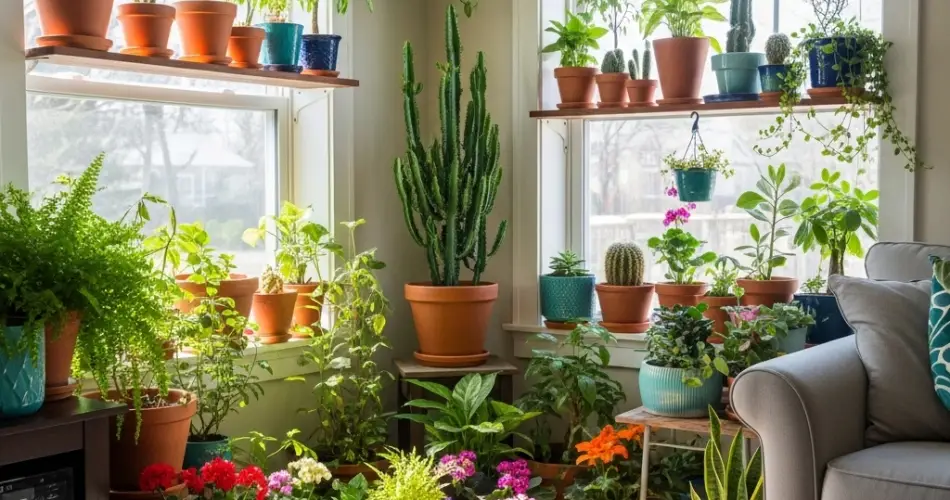When it comes to growing healthy plants at home, many gardeners focus on soil quality, watering, and sunlight, but overlook one crucial element: the pot. The truth is, the type of pot you choose can significantly impact your plant’s health, growth, and productivity. Surprisingly, many pot manufacturers do not highlight this important fact because certain popular pots may actually hinder plant growth.
This article reveals essential secrets about pots that every home gardener should know. Whether you grow flowers, herbs, vegetables, or houseplants, understanding how pots affect your plants will help you create a thriving urban garden.
Why the Right Pot Matters
Plant roots need the right environment to absorb water, nutrients, and oxygen. A pot that traps too much water or restricts airflow can cause root rot, stunt growth, or even kill your plants. On the other hand, a well-chosen pot promotes healthy root systems and supports vigorous growth.
Manufacturers often focus on selling attractive pots made from trendy materials, but the functionality for plant health can be overlooked. Knowing the differences between pot types, materials, and drainage options can save you from common gardening frustrations.
Common Mistakes When Choosing Plant Pots
-
Ignoring Drainage: Many decorative pots come without drainage holes. Without proper drainage, water accumulates at the bottom, suffocating roots and inviting diseases. Always ensure your pot has sufficient drainage holes, or create some yourself if possible.
-
Using Non-Breathable Materials: Some plastic pots do not allow air to reach the roots, limiting oxygen supply and increasing the risk of fungal growth. While plastic is lightweight and inexpensive, it isn’t always the best choice for long-term plant health.
-
Overlooking Size: Choosing a pot that is too large or too small can stress your plant. Too large a pot holds excess soil, retaining too much moisture, while a small pot restricts root growth.
The Best Pot Materials for Healthy Plants
-
Terracotta and Clay Pots: These are excellent for plant health because they are porous and allow air and moisture to pass through the pot walls. This improves root oxygenation and prevents waterlogging. However, terracotta pots dry out faster, so plants may require more frequent watering.
-
Ceramic Pots: Often glazed and less porous than terracotta, ceramic pots retain moisture longer but usually come with drainage holes. They are great for indoor plants but check for drainage to avoid soggy roots.
-
Plastic Pots: Lightweight and budget-friendly, plastic pots are popular but less breathable. They work well for plants that prefer consistently moist soil but require careful watering to avoid root rot.
-
Fabric Grow Bags: Increasingly popular among urban gardeners, fabric pots allow excellent air pruning of roots and drainage, encouraging a healthy root system. They also reduce the risk of overwatering.
Pot Size: Finding the Perfect Fit
Choosing the right pot size is vital. When repotting, select a pot that is one or two sizes larger than the current container. This prevents soil from holding excessive moisture and allows roots enough room to grow without overwhelming the plant.
For seedlings or young plants, smaller pots are better to avoid root drowning. For mature plants, larger pots provide stability and support for vigorous root systems.
Drainage: The Hidden Key to Success
Without drainage, excess water stays trapped in the soil, causing root suffocation and fungal diseases like root rot. Always ensure your pot has drainage holes. If using decorative pots without holes, place your plant in a smaller plastic pot with drainage inside the decorative one, or create drainage holes if possible.
Also, avoid placing pots directly on flat surfaces where water cannot escape. Use pot feet, small stones, or a tray with holes to elevate the pot and allow water to flow freely.
Tips to Maximize Pot Efficiency
-
Add a Layer of Gravel or Broken Pottery: Placing a small layer at the bottom of the pot improves drainage and prevents soil from blocking drainage holes.
-
Use Quality Potting Mix: A well-draining mix suitable for your plant type is crucial to avoid water retention issues.
-
Water According to the Pot’s Material: Terracotta pots dry faster, so adjust watering accordingly. Plastic pots retain moisture longer, requiring less frequent watering.
The Secret Manufacturers Don’t Highlight
Some pot manufacturers promote stylish pots made of materials or designs that prioritize looks over function. These pots may look great but could be detrimental to plant health if they lack drainage or breathability.
Another hidden fact is the frequent use of plastic liners inside decorative pots, which can trap moisture and cause root rot if not managed carefully.
By understanding these points, you can make informed choices, combining beauty with function to give your plants the best chance at thriving.
Conclusion
Your choice of pot can make or break your gardening success. Proper drainage, breathable materials, and appropriate sizing are essential for healthy roots and vigorous plants. While manufacturers may focus on aesthetics, gardeners need to prioritize plant needs for long-term growth.
By selecting the right pots and caring for them properly, you create an environment where your plants can flourish—whether indoors or in a home garden.
Don’t fall for the trap of choosing pots based on looks alone. Equip yourself with this secret knowledge, and watch your home garden thrive like never before!



